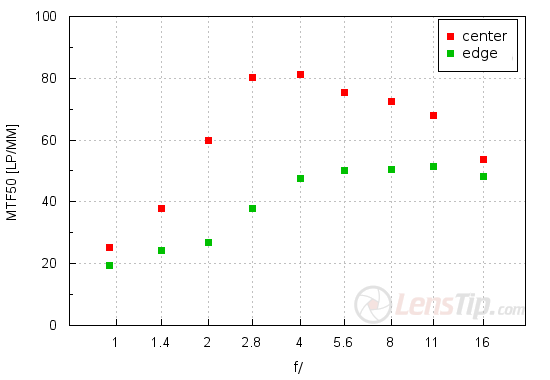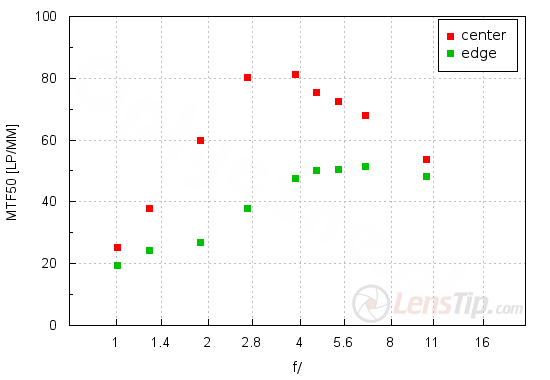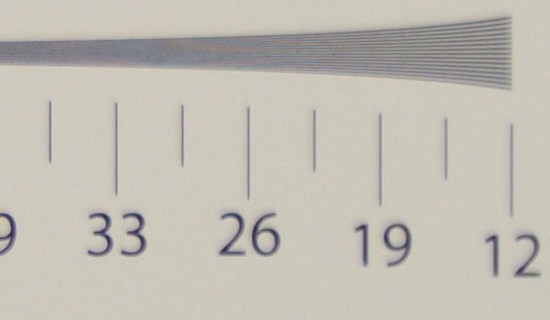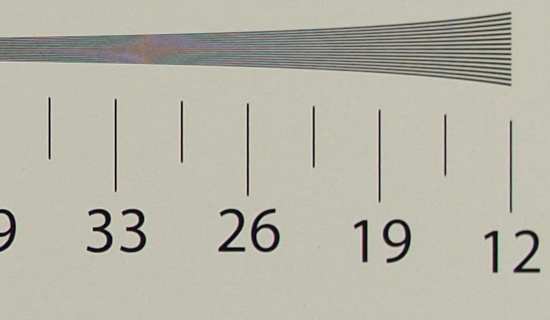Mitakon Speedmaster 35 mm f/0.95
4. Image resolution
Let’s have a glance at a graph presented below and check how the tested lens compares – you see the MTFs reached in the frame centre and on the edge of the Micro 4/3 sensor.

Please Support UsIf you enjoy our reviews and articles, and you want us to continue our work please, support our website by donating through PayPal. The funds are going to be used for paying our editorial team, renting servers, and equipping our testing studio; only that way we will be able to continue providing you interesting content for free. |
- - - - - - - - - - - - - - - - - - - - - - - - - - - - - - - - - - - - - - - - - - - - - - - -
Before we start any in-depth analysis of the performance of the tested lens let’s look at surprisingly high results in the frame centre for higher aperture values. For example by f/16 you get almost 54 lpmm whereas by the same aperture both Voigtlanders, the 25 mm and the 42.5 mm, were just able to exceed 40 lpmm . A similar situation you witness by f/11 where the MTFs of the Mitakon reach 68 lpmm and the MTFs of Voigtlanders are a bit over 50 lpmm. When you test lenses as fast as f/0.95 the apertures ranging from f/8-16 are only limited by diffraction. On stopping down by over 5 EV other optical aberrations don’t have any significance anymore. The MTFs reached by the Mitakon and the Voigtlanders in the range from f/8 to f/16 should have been identical within the margin of error but they aren’t. The Mitakon is showing very high values which from the physics point of view don’t make sense.
The explanation of that phenomenon wasn’t difficult. It’s enough somebody put the wrong markings of relative apertures on the aperture ring which works without any stops. We decided to measure the real entrance pupils and determine precisely what aperture you deal with at a given ring setting. Our results are presented in a chart below.
|
|
|
|
|
|
|
|
|
|
|
|
|
|
|
|
|
|
|
|
|
|
|
|
|
|
|
|
|
|
As you can notice till f/4.0 you everything is in a more or less reasonable accordance; then the ring settings can differ from the real aperture values by even 1.5 EV. It is another mechanical slip-up, nothing pleasant to be sure. There are no ring steps and the information from the lens is not transferred to a camera body so the values you get on the ring are your only guidance. Unfortunately, those values don’t reflect the reality at all…
Let’s draw our resolution graph again and present the results as it should be done – with the proper aperture values.

Near the maximum relative aperture the image is of weak quality. In order to get sensible MTFs you have to close down the aperture by about 1.5 EV. Then the resolution increases very swiftly, reaching a peak near f/2.8-4.0 and exceeding a level of 80 lpmm. You have to admit such a value is a great achievement and only few Micro 4/3 lenses manage to fare so well. I have to say our impressions are mixed. On the one hand we are disappointed by the performance near the maximum aperture, on the other hand the maximum result of the Mitakon is really good and truly impressive.
Unfortunately when you look at the edge of the frame you might have even more reservations. In order to get a good image quality the lens must be stopped down to almost f/4.0. Let’s not forget that the imaging field of that instrument was supposed to cover an APS-C sensor, definitely bigger than the Micro 4/3 one. Meanwhile even on a small sensor the lens fares only moderately well…
At the end of this chapter traditionally we show crops taken from photos of our resolution testing chart which were saved in JPEG format along with RAWs we used for the analysis above.
| Olympus E-PL1, JPEG, f/0.95 |
 |
| Olympus E-PL1, JPEG, f/2.8 |
 |






